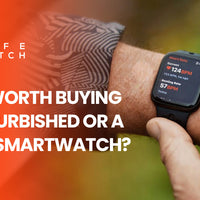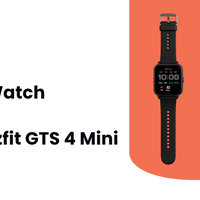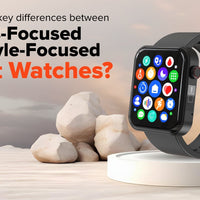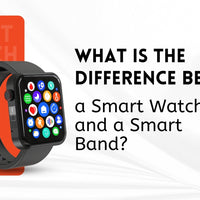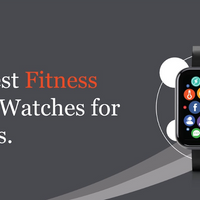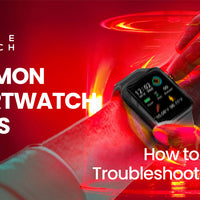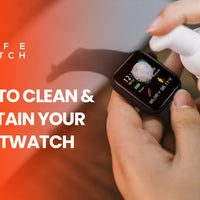Smartwatches and wearable sensors have become increasingly prevalent in today's tech-driven world. These devices offer many opportunities for enhancing our daily lives, particularly in health monitoring, fitness tracking, and personal productivity. However, despite their potential benefits, they also present challenges and obstacles that must be addressed. This article will explore the opportunities and barriers associated with smartwatches and wearable sensors, providing a comprehensive overview of their impact on our lives. We will also highlight innovations from companies like LifeWatch, which are at the forefront of this technological revolution.
The Opportunities for Smartwatches and Wearable Sensors
1: Health Monitoring and Disease Prevention
One of the most significant opportunities smartwatches and wearable sensors offer is their continuous monitoring of health metrics. Devices like those from LifeWatch can track various health indicators, including heart rate, blood pressure, and even blood oxygen levels. This real-time monitoring can help in the early detection of potential health issues, enabling timely medical intervention and potentially saving lives. For instance, wearables can detect irregular heartbeats, prompting users to seek medical advice before a condition worsens.
![]()
These devices can assist in managing chronic diseases. Diabetics, for example, can use smartwatches to monitor glucose levels, while individuals with hypertension can keep an eye on their blood pressure. The continuous data stream allows for more personalized and effective management of these conditions. Additionally, health monitoring through wearables can facilitate preventive healthcare. By providing insights into daily habits and health trends, users can make informed decisions to improve their lifestyle, such as increasing physical activity or adjusting their diet.
2: Fitness and Activity Tracking
Fitness tracking is another significant opportunity presented by smartwatches and wearable sensors. These devices can track physical activities, count steps, monitor calories burned, and even analyze sleep patterns. They give users detailed feedback on their fitness progress, helping them stay motivated and achieve their health goals. Features like GPS tracking and exercise recognition enable users to optimize their workouts and monitor their performance accurately.
![]()
The motivational aspect of fitness tracking is also noteworthy. Many wearables incorporate gamification elements, such as earning badges or competing with friends, to encourage users to stay active. This social aspect fosters a sense of community and accountability, making fitness a more engaging and enjoyable part of daily life. Moreover, personalized fitness plans and real-time coaching available on devices like LifeWatch can guide users through tailored workout routines, maximizing the effectiveness of their exercise efforts.
3: Convenience and Connectivity
Smartwatches offer unparalleled convenience by integrating multiple functionalities into a single device. They can receive notifications, control smart home devices, manage schedules, and even make payments. This connectivity streamlines daily tasks and keeps users connected without constantly checking their smartphones. For example, users can receive important alerts, respond to messages, or navigate using maps directly from their wrists, enhancing productivity and efficiency.
Additionally, wearable sensors can enhance personal safety. Features like fall detection and emergency SOS functions can alert designated contacts or emergency services if the user is in danger. This added layer of security is particularly beneficial for elderly individuals or those with health conditions that increase the risk of falls or other emergencies.
4: Advancements in Technology and Innovation
The rapid advancement of technology continues to expand the capabilities of smartwatches and wearable sensors. Innovations in sensor technology, battery life, and connectivity are making these devices more powerful and versatile. For example, integrating artificial intelligence and machine learning allows wearables to provide more accurate health insights and personalized recommendations. Companies like LifeWatch are at the forefront of these innovations, continually pushing the boundaries of what wearable technology can achieve.
The Obstacles for Smartwatches and Wearable Sensors
1: Data Accuracy and Reliability
One of the primary challenges facing smartwatches and wearable sensors is ensuring the accuracy and reliability of the data they collect. Inaccurate readings can lead to misguided health decisions and reduce user trust in the technology. Factors such as improper fit, sensor limitations, and technical glitches can all contribute to data inaccuracies. For instance, a loose-fitting smartwatch may provide incorrect heart rate readings, potentially causing unnecessary concern or a false sense of security.
To address this issue, manufacturers must continue improving sensor technology and develop algorithms to filter out noise and provide more accurate readings. Additionally, users should be educated on these devices' proper use and fit to ensure optimal performance. It is also essential for users to corroborate wearable data with other reliable sources or seek professional medical advice when necessary.
2: Privacy and Security Concerns
The collection and storage of sensitive health data by wearable devices raise significant privacy and security concerns. There is a risk that this data could be accessed by unauthorized parties or used for purposes beyond the user's consent. For example, if health data is not adequately protected, it could be exploited for identity theft or insurance fraud. The commercialization of health data also raises ethical issues, as companies may use this data for targeted advertising or sell it to third parties without explicit user consent.
To mitigate these risks, manufacturers must implement robust security measures like encryption and secure data storage. Users should also be informed about how their data is being used and have control over their privacy settings. Regulatory frameworks must evolve to address these concerns and protect user data.
3: Cost and Accessibility
The cost of smartwatches and wearable sensors can be prohibitive for some individuals, limiting their accessibility. High-end devices with advanced features often have a substantial price tag, making them less accessible to lower-income populations. This disparity can exacerbate health inequalities, as those who could benefit most from these technologies may not be able to afford them.
To overcome this obstacle, manufacturers should explore ways to make these devices more affordable without compromising quality. Additionally, subsidies, insurance coverage, or government programs could help increase accessibility to wearable technology for underserved populations. By making these devices more accessible, we can ensure that a broader range of individuals can benefit from their health and fitness monitoring capabilities.
4:User Engagement and Retention
Maintaining user engagement and retention is another challenge for wearable technology. Initial excitement can wane, and users may stop using their devices regularly. Complex interfaces, battery life limitations, and the perceived lack of valuable insights can decrease user engagement. For instance, if a smartwatch requires frequent charging or its interface could be more accessible to navigate, users may find it inconvenient to use consistently.
To address this issue, manufacturers should focus on creating user-friendly interfaces, improving battery life, and providing meaningful and actionable insights. Features that personalize the user experience and gamify fitness tracking can also enhance engagement. Regular software updates and customer support help maintain user interest and satisfaction.
Final Words
Smartwatches and wearable sensors present many opportunities to enhance health, fitness, and convenience. Companies like LifeWatch are leading the way in developing innovative solutions that leverage these technologies to improve our lives. However, several obstacles must be addressed to realize their full potential. Ensuring data accuracy, protecting user privacy, making devices affordable and accessible, and maintaining user engagement are critical challenges that require ongoing attention and innovation. By addressing these obstacles, we can harness the full potential of smartwatches and wearable sensors, paving the way for a healthier, more connected future.









